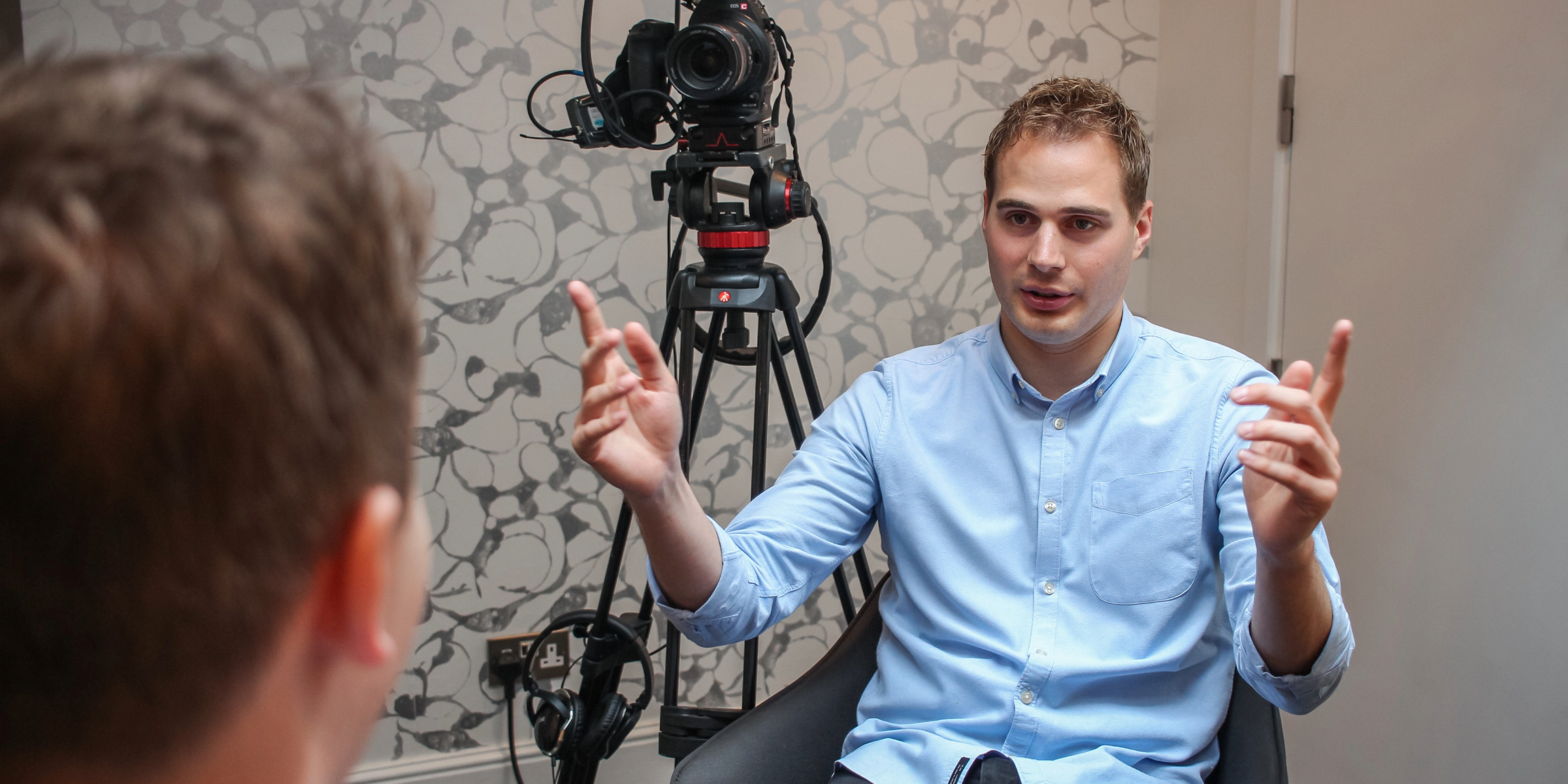It’s become expected practise that spokespeople will have received media training before appearing on radio and television, but presentation training is often overlooked. Foolish really, because nearly every business conversation is a presentation of sorts, be it a speech, a pitch or a boardroom meeting.
Fight or flight
A dry mouth, a beating heart and fast, shallow breathing are just some of the symptoms we experience when we feel anxious.
The biological process that underpins anxiety is the fight or flight response. We’re no longer fighting or running away from sabre tooth tigers but when we are faced with a challenging situation our body responds in the same way. The mouth is part of the digestive system and this shuts down when there’s “danger”, as energy is diverted towards the muscles. The heart beats faster to feed more blood to the muscles, so we can better run and fight. And quicker breathing means we take in more oxygen to power the muscles, again so we can better run or fight.
How to mitigate these symptoms
The symptoms of nerves are physical so preparing yourself physically can really help. Start with your posture:
- Find your centre. We are all lop-sided, so the goal is to find your perfect balance, legs spread, feet firm, arms hanging by your side, head raised and centred. Hold your stomach in and place your hand on your stomach to remind yourself to speak from your diaphragm. Lower your chin to your chest and roll your head round clockwise, then anti clockwise. Lift your chin up making sure it’s balanced over the centre of the body, not tilted to one side.
Then relax:
- Roll your shoulders forwards three times, then backwards.
- Next, using the wall as support, drop your spine forward, one vertebrae at a time, breathing out. Come back up slowly, lengthening the neck like a puppet on a string.
- Screw up your face, tensing all your muscles, then relax them.
And warm that voice up:
- Exercises for resonance could include humming! Hum! Then hum different notes…Now hum as you chew….Massage the face as you hum….
- For articulation get those lips going: horselips or tongue twisters should do it.
- For projection: stand close to and facing the wall before speaking. Let those words bounce off the wall before standing further back and trying again.
Mental preparation should include arming yourself with the information you need to speak confidently.
- Key facts or figures or messages. Limit yourself to no more than 3 or 4.
- Rehearse. The more you rehearse the more confident you will be.
- Think audience. What do they already know, or not?
Giving a speech
The symptoms of nerves are physical so preparing yourself physically can really help. Start with your posture:
- Find your centre. We are all lop-sided, so the goal is to find your perfect balance, legs spread, feet firm, arms hanging by your side, head raised and centred. Hold your stomach in and place your hand on your stomach to remind yourself to speak from your diaphragm. Lower your chin to your chest and roll your head round clockwise, then anti clockwise. Lift your chin up making sure it’s balanced over the centre of the body, not tilted to one side.As with television, much of the impact can be not what you say but how you say it. You’ll probably be reading from a script or auto-cue, and whilst it is reassuring to have the words there in front of you, you sometimes need to lift your eyes to look at the audience.If you’re reading from a piece of paper the trick is to keep your finger on the place as you look; with auto-cue you the operator should keep pace with you, so you just need to turn back to the top of the screen.Work that room! Imagine a large Z that starts in the far left hand corner of the audience, goes across to the right, up to the front left and along the front row to the right. Everyone will feel you’ve made eye contact with them.
Passion
Nerves can squash the most passionate of speakers. The shallow breathing makes our voice sound small and weak. Remember to breathe from your diaphragm, have a drink of water to mitigate the dry mouth before you start and enthuse. This means allowing your voice to use high and low intonation, rather than a flat monotone. And when you want to sound final end on a firm downward tone.
One to One Communication: Matching and mirroring
It’s a known fact: people like people who are like themselves so you aim to match and mirror them. How they breathe (quiet or noisy, fast or slow), speak (tone, volume, speed) and move (high or low energy) are all factors.
When you are really nervous
Everyone can reduce their nerves if they try, but for extreme anxiety you could try a technique called Graded Exposure. The theory works by trying to break the vicious cycle of avoiding a challenging situation (such as a pitch) which means you avoid any unpleasant symptoms for a while but makes you more fearful of ending up in such a situation again.
Articulate, memorable (for the right reasons) and a communicator who has gravitas – these are the goals for all of us when it comes to good presentation.
If you would like to improve your own presentation skills and learn how to capture the hearts and minds of the audience, take a look at our bespoke spokesperson training courses, that use trainers who are experienced in journalism and PR.



